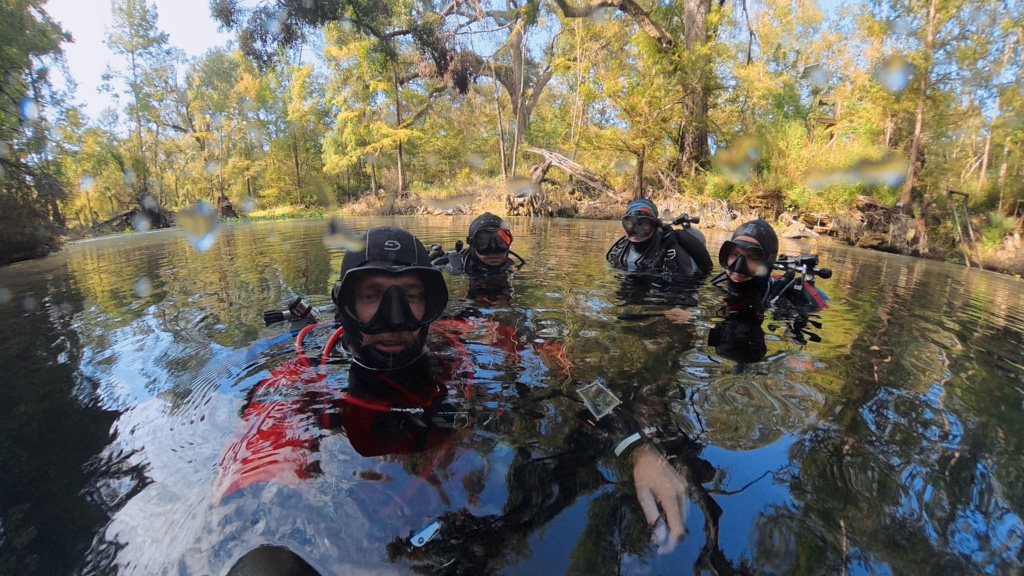If there is one place in the world I absolutely don’t want to be, it’s in a cave. Specifically, an underwater cave. So how is it that I find myself winding my way through a system called Devil’s Eye, trying to have perfect buoyancy and convince myself that I’m not a complete idiot with a death wish? I’m still not sure, but three months earlier, when Brett Seymour of the SRC asked me if I wanted to participate in this Cavern, Intro to Cave, and Full Cave diving course, the words “thanks, but absolutely not” were on the tip of my tongue. Somehow, I ended up asking if I could have more information instead.
The rest is history. Upon learning that the course would be very comprehensive, with other NPS divers, and led by a highly recommended instructor, I realized this opportunity was too good to pass up. Even though I find no intrinsic motivation to enter a cave whatsoever, I want to become a better diver which this course absolutely facilitates. With that, I tell my family that I will be diving in “springs” in Florida and start to nervously count down the days until I start the course.
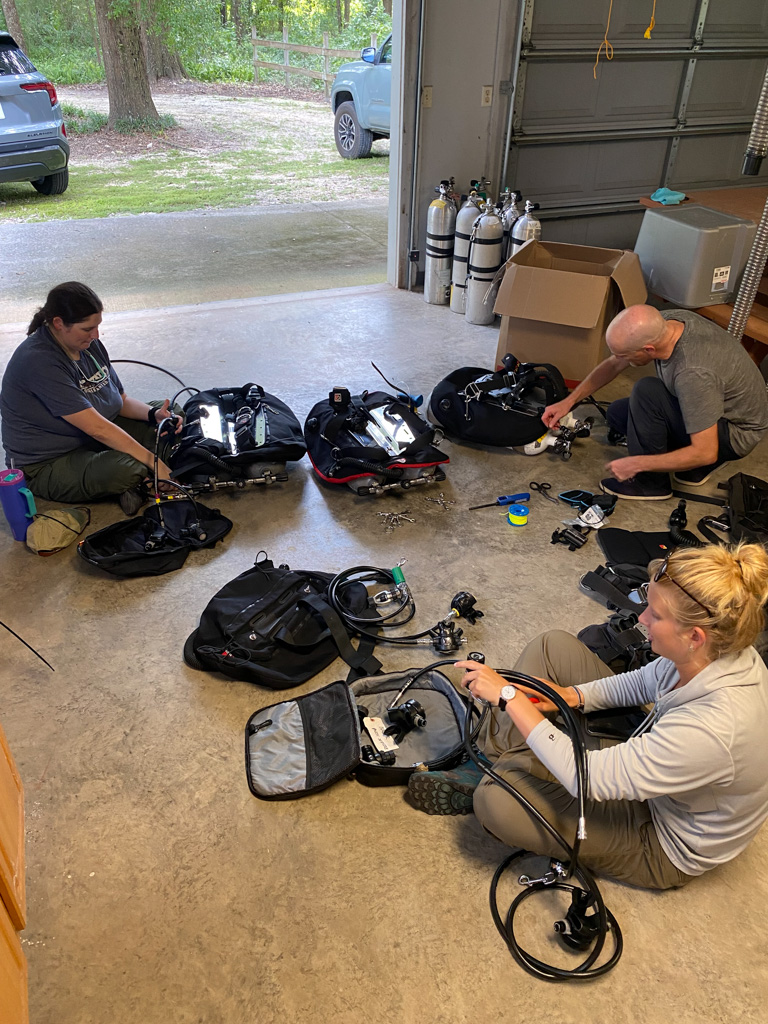
I meet our instructor, Josh Thornton – a well-known diver, cave instructor, and co-founder and President of Subgravity – who has worked with the SRC in the past. I also meet the two NPS divers. Regional Diver Officer for the Pacific West Region, as well as Fisheries Biologist for Crater Lake is also named Josh (Sprague), which might make this blog a little confusing. Amelia Lynch is the new Park Dive Officer for Devil’s Hole in Death Valley National Park. Devil’s Hole is a very unique cave system that is home to one of the world’s rarest species of fish: the endemic Devil’s Hole Pupfish.
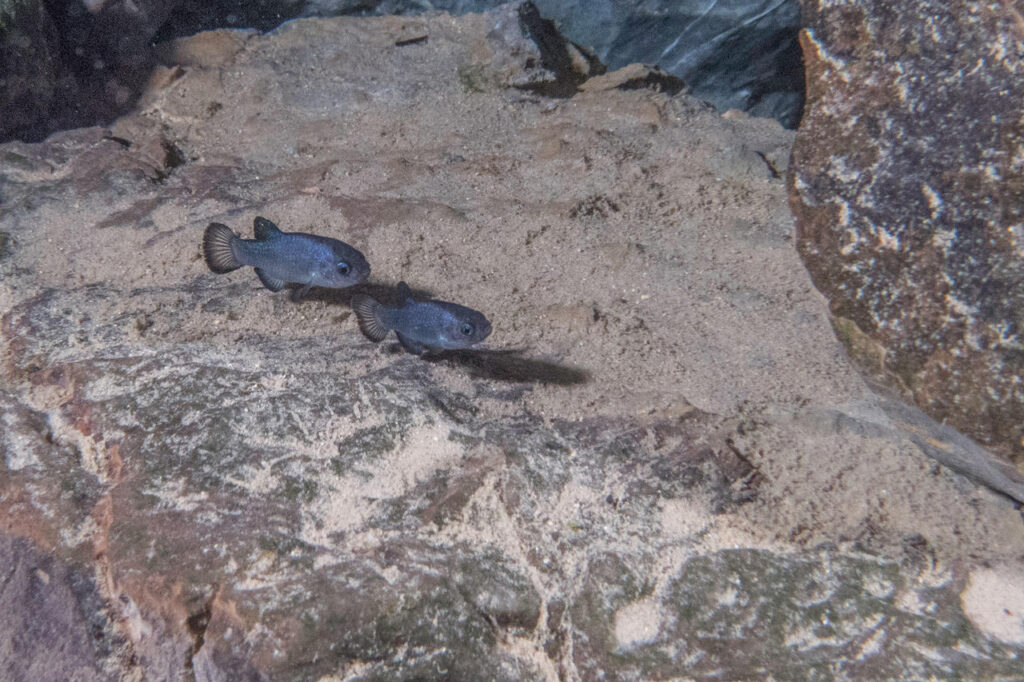
Devil’s Hole is interesting in that it fluctuates with tides and is impacted by earthquakes that occur thousands of miles away. This isn’t the best news for the pupfish, who rely on a very delicate ecosystem for sustenance like algae, and have recently struggled in the wake of some earthquake disruptions. It’s critical for park divers, like Amelia, to conduct regular counts to monitor changes in their populations. The only thing is, they live at the entrance of a cave system that extends thousands of feet down. This means Amelia needs her Intro to Cave and Full Cave Certification before the next pupfish count (spoiler: both she and Josh S. absolutely crush the course).
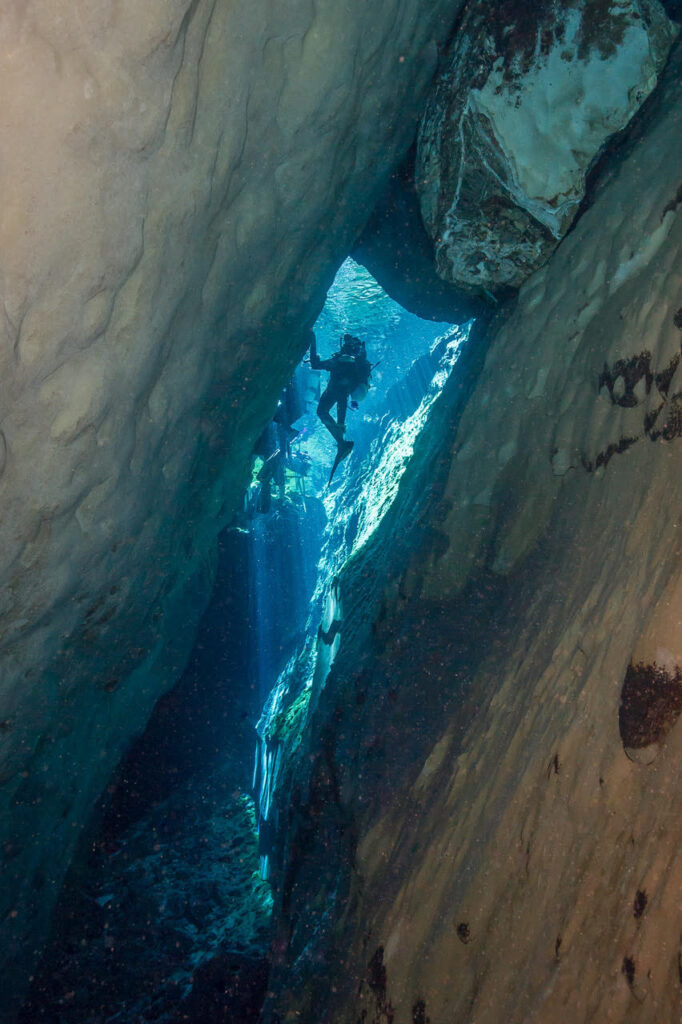
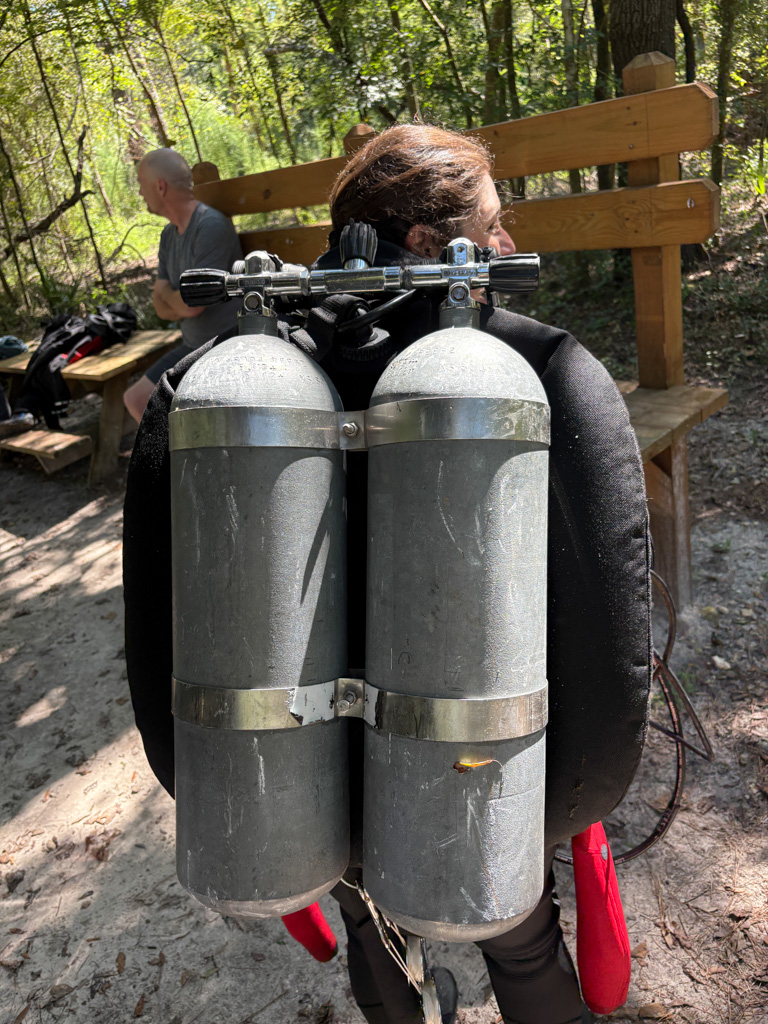
My feelings about caves aside, I was already set up for a challenge with all the new equipment configurations we’d be using, especially the extraordinarily heavy steel doubles. The first day of diving, my fins are too light, my trim is off, and I spend most of our three-hour dive face-planting into the sand. With a different pair of fins on the next day, I had a much easier time with my buoyancy, but that is not to say it wasn’t a struggle. Pair this with a blindfold over my mask, and that’s how I ended up crashing into my buddies and every single dang rock within range of our line.
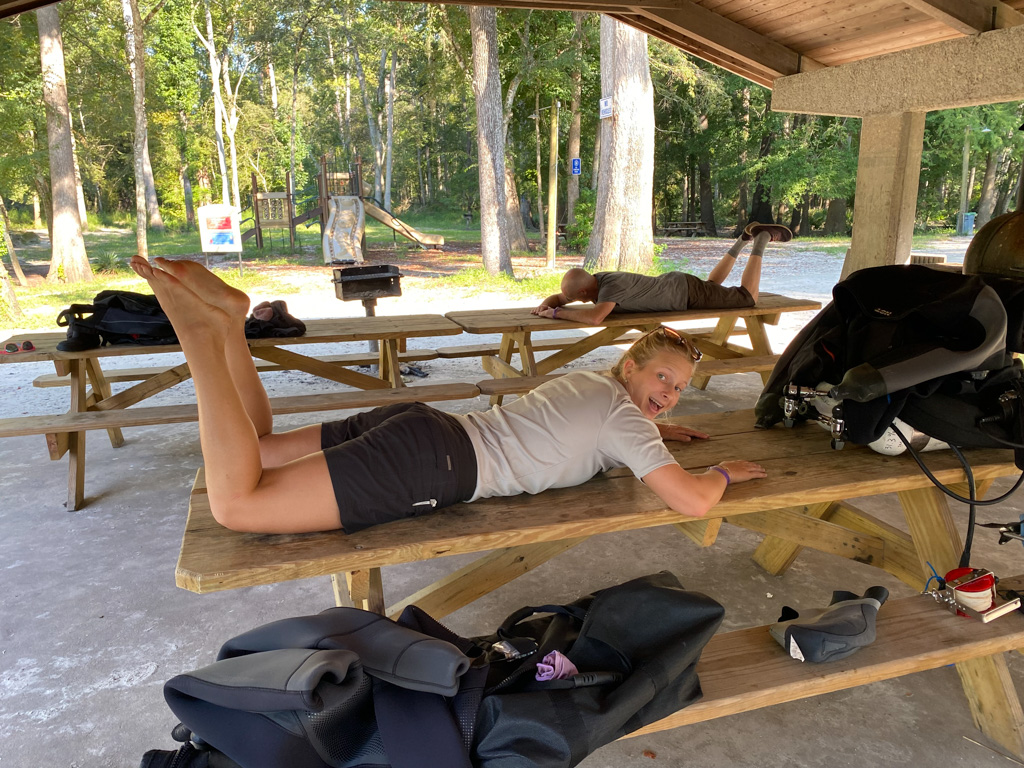
Slightly too buoyant and surrounded by pitch black, I am enveloped in an overwhelming sense of vertigo. At first, I manage to breathe calmly and try to regain my buoyancy after swimming in circles and rolling with my tanks, all with the line clenched in my hand so our instructor can’t bat it out of any loose “ok” grasps. Then, I grab a rock to steady myself, and I realize I’m not swimming in circles. Instead, it’s just the sensation of my head going round and round on a merry-go-round, with the feeling of the heavy centrifugal pressure pushing against my skull. I keep my breathing as steady as I can, but head pounding, I feel ready to get rid of my lunch. Finally, I rip the blindfold off, signal I am stopping the drill to our instructor … and stand up in…five feet of water.
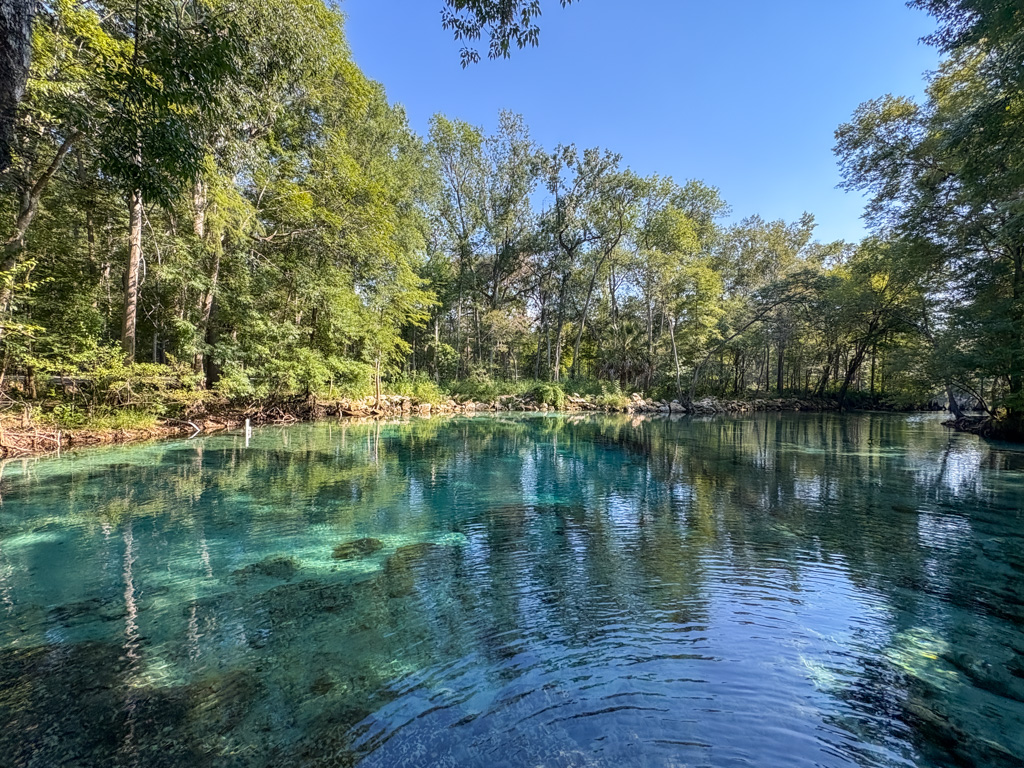
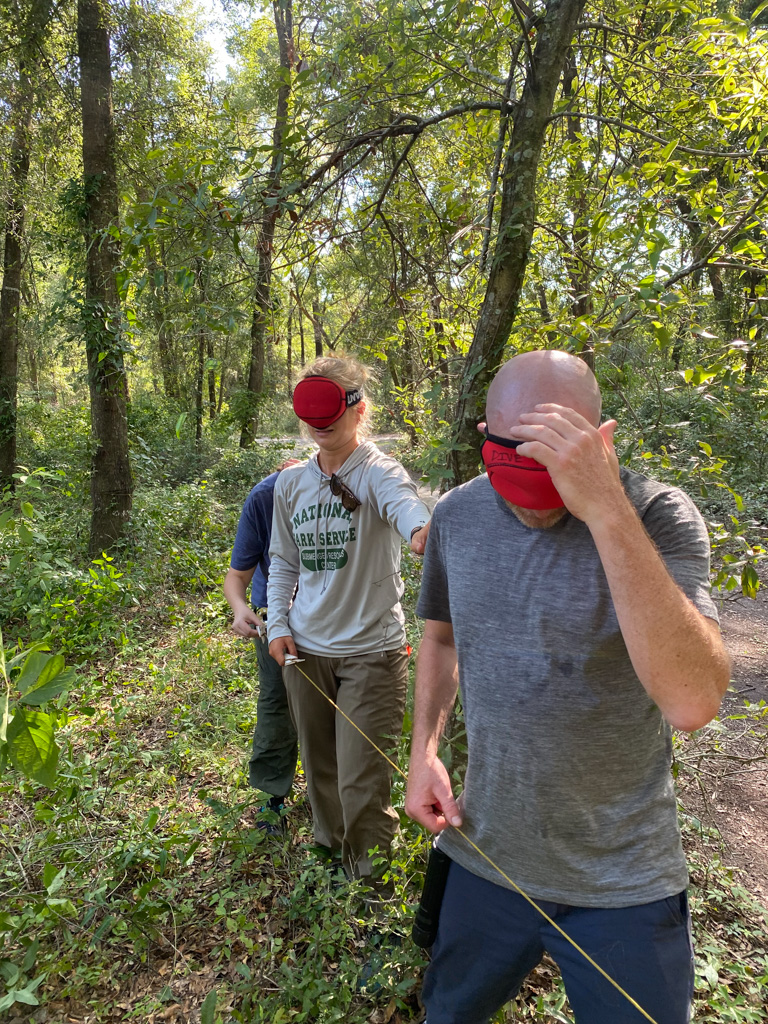
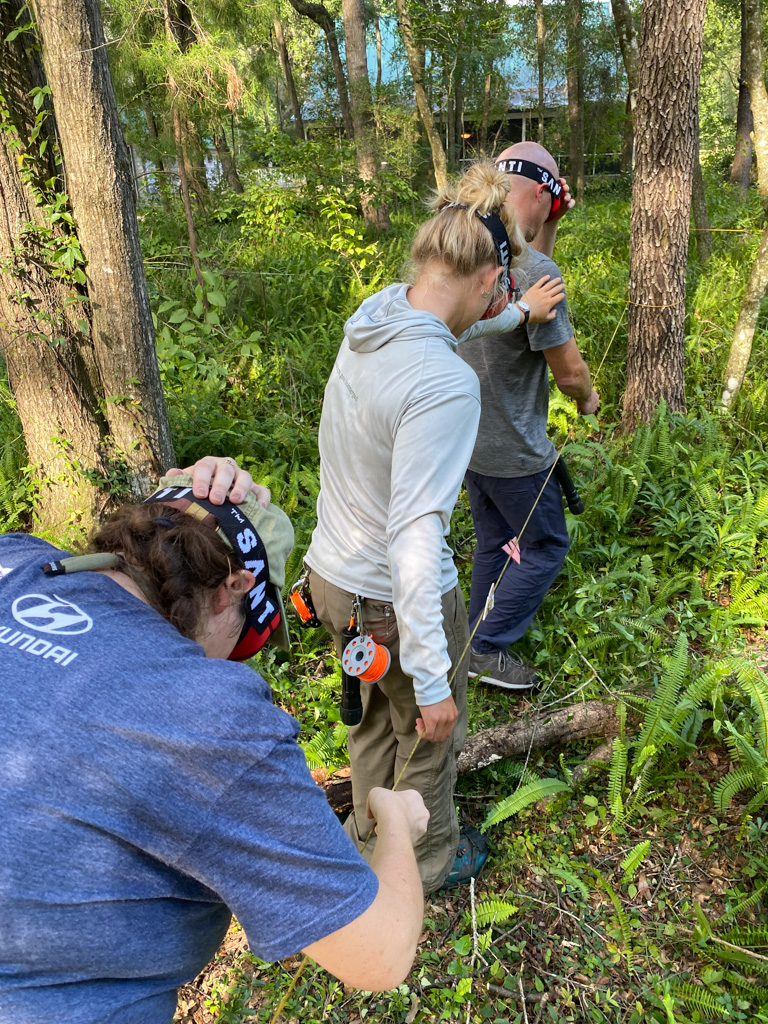
At this point, I haven’t even entered an overhead environment and am no closer to wanting to. Our first journey into a cave is in Orange Grove at Peacock Springs. After the crystal clear water of Ginnie, I was mentally prepared to be able to see straight through the springs to the cave entrance. To my utter delight, Orange Grove was absolutely covered in duckweed, to the point that anyone passing by would assume it’s a shallow pond if not for the “warning, people have died here” signs. Less than thrilled, I descend with the group into murky green water, trying to spit the duckweed in my mouth out through my regulator. Even though the visibility was astounding inside the cave, I was pretty miserable unless it was my turn to practice laying the line. With nothing to focus my mind on, I spent the agonizing minutes imagining catastrophic scenarios inside the cave. I have a pretty good imagination.
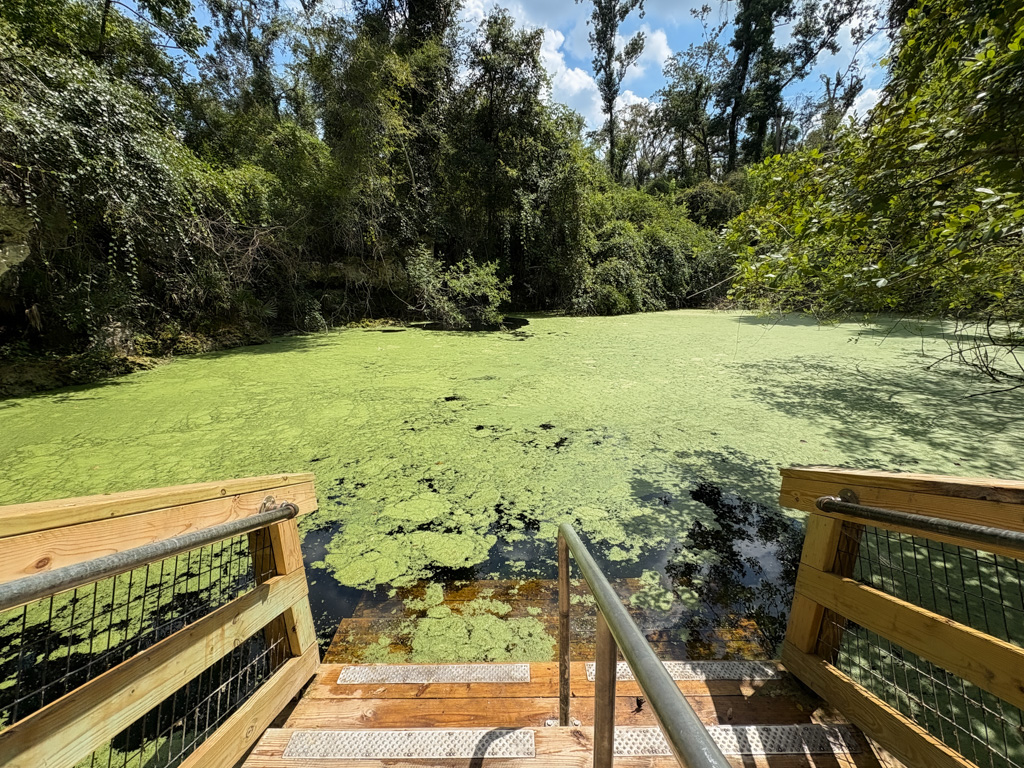
Once all three of us had practiced laying the reel, Instructor Josh took us on a short little jaunt into the actual cave. I hated every single second of it, and even though my body wasn’t telling me something was wrong, my mind was. Every single thing I’d previously heard about how dangerous caves were, even to experienced divers, crowded the front of my mind, and I kept asking myself, why am I here? When we surfaced, the first thing I said to Instructor Josh was “I don’t think I can go in a cave again.” In his usual way, he smiled reassuringly and gave me a neutral “okay,’’ leaving the decision up to me.
I got out of my gear and sat on a ledge above the cave, letting fish nibble on my toes and watching a rat snake hunt lizards. Bathed in warm sunlight, surrounded by the lush foliage of the springs, I felt so much joy in watching these simple things. I could barely sit still as I watched the snake nab an anole and then oscillate its body to digest it. At this moment, an even bigger question began to form in my mind. If such small, simple things bring me so much happiness and wonder, then what the hell was I doing in a cave when it didn’t stir the slightest excitement in me?
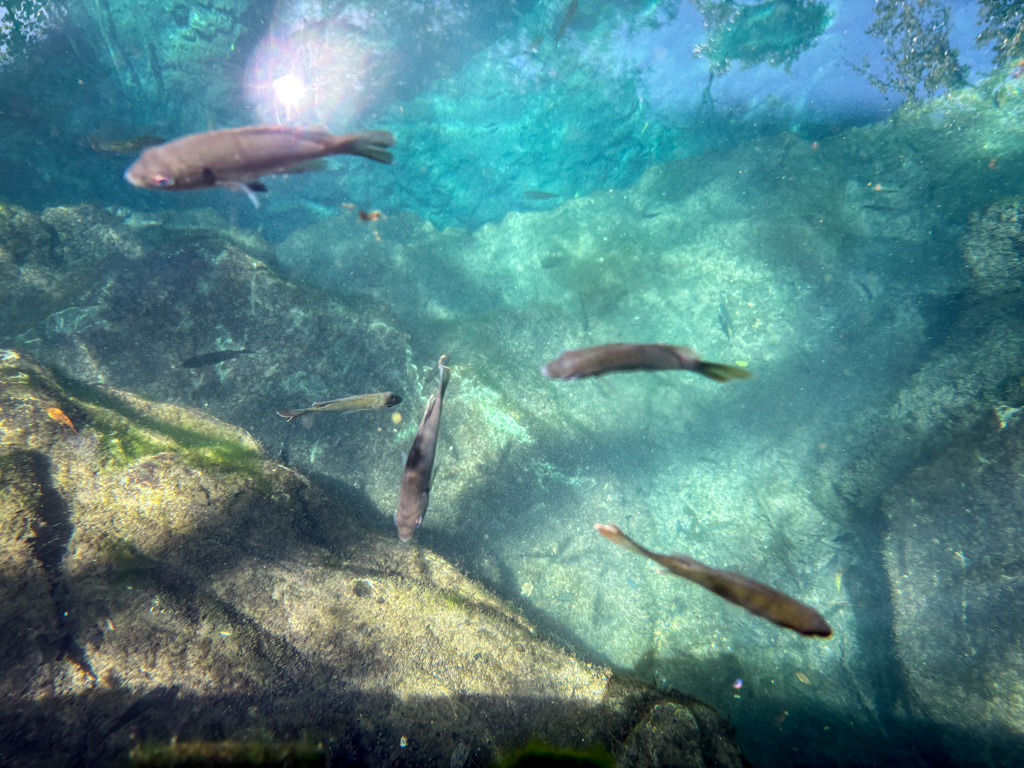
The next few days are a roller coaster of me forcing myself into caves and then calling it quits in the middle of dives. At least two or three times a day, I’m convinced that I’m absolutely done, and I can’t push myself further. The thought that I’d make myself go back in a cave is an impossibility within my mind during these moments.
To the credit of Instructor Josh, Amelia, and Josh S., no one pushed me into doing anything I didn’t want to, and everyone was incredibly supportive and positive with me throughout the class, which I believe speaks to the caliber of people I was with. Amelia needed to complete this course for her job at Devil’s Hole, and even though I constantly worried I would slow down the group, and therefore her progress, she always made me feel better after I brought it up. Both she and Josh S. were very supportive team members and were kind enough to figuratively hold my hand through some of the course (though at that point, I wouldn’t have minded it literally).
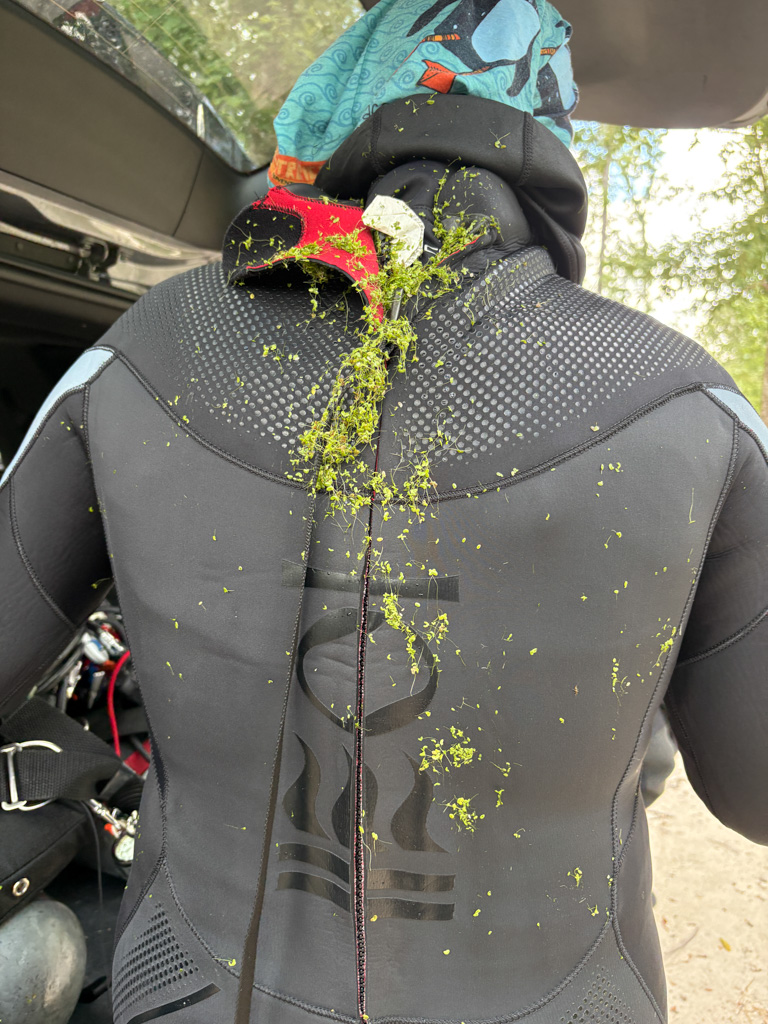
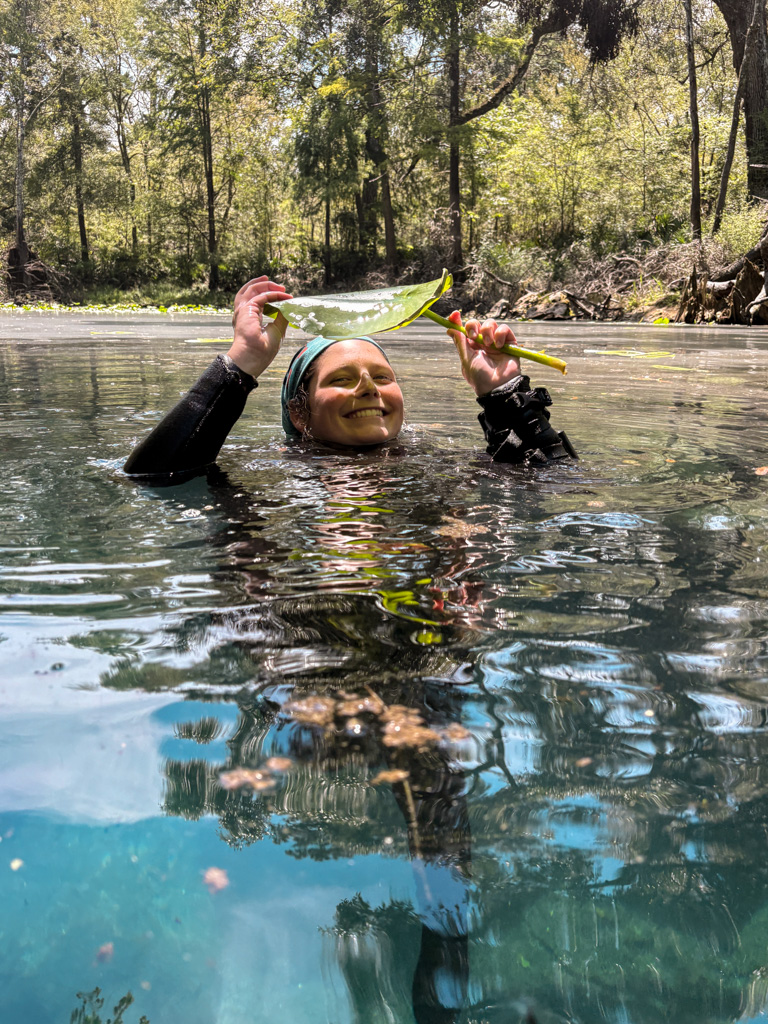
So many voices were competing in my head during these dives – my family, my friends, and my own, all saying various things like “cave diving isn’t worth it,” and “don’t push yourself to do things that feel wrong.” Even though my mind was telling me no, I had no butterflies, no nerves or high heart rate, just a deep feeling that I’m not supposed to be in a cave. My biggest fear about being in caves is not about my equipment, team, or instructor failing; it has been that I will freak, rip my regulator out, hit my head on the cave, and thrash about as I vainly claw towards the exit, only to die as I choke on the cold water flooding my lungs.
At the end of each day, defeat hangs around me like a somber cloud. I try to stay positive, and grateful for the opportunity, but the repeated failures chip away at me, and I am left mentally and physically exhausted. One night, I decided I was done. I had pushed myself farther than I ever thought I would go. I tried it out, and I couldn’t justify it in my mind. But someone else could justify it, and that someone was waiting for me back at the lodging. Brett Seymour knows me too well for the little time we have spent together, and he knew that I had it within me to push even further.
We spent a few hours talking about my experience with the class so far, and his very similar experience when he originally took the class. We talked through which parts of cave diving were scary to me, and what mitigations were in place. Even though it felt like I was super unsafe, if I could change my mindset, I would realize that all the situations I was imagining were very unlikely. What is the only true emergency in cave diving? Running out of air. How is this mitigated? I can share air with three other very competent divers, and we are all diving conservatively with the rule of thirds. We all run through or lose our three lights? We can hold the line and follow directional arrows out, and Instructor Josh knows every inch of these cave systems. I freak out, rip my reg and mask off, and try to bolt for the exit? Instructor Josh has the skills and experience to manhandle me to the surface alive. We went through many more scenarios, and Amelia and Josh S. were also incredibly helpful in pointing out the things I had done well within the class, which was encouraging because I was only focusing on what I did wrong.
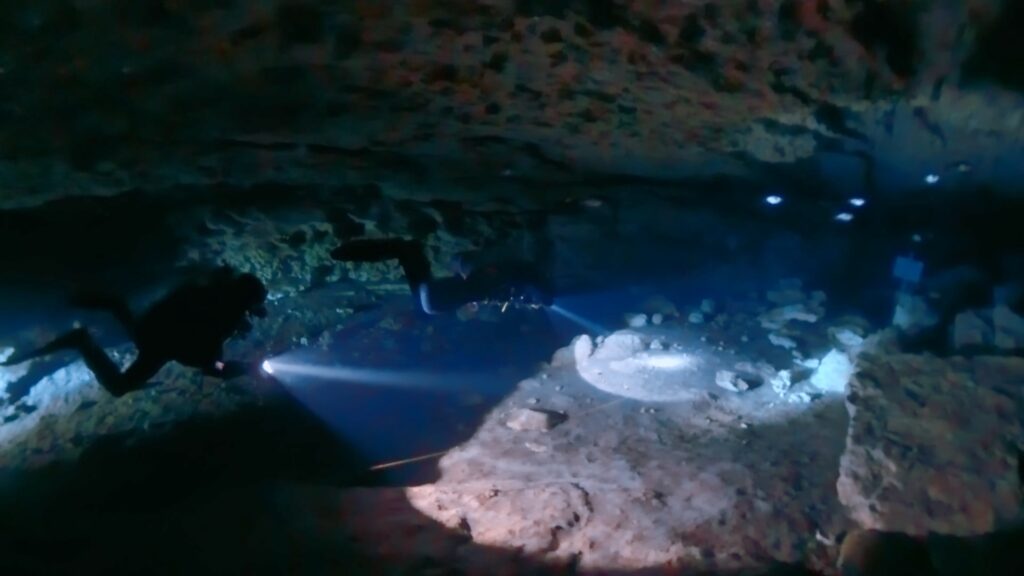
I realized that whether or not I could continue had nothing to do with my diving skills and everything to do with my mind. If I wanted to try to push through, I needed to consciously choose to switch my mindset. Otherwise, keeping the same questions and doubts was only hindering me. I’ve never been a quitter, and I didn’t want to start now. That night, as I lay in bed, I started practicing turning off the fears that had been ruling me. It didn’t mean they weren’t valid or real risks, but I couldn’t keep over-analyzing them. I showed up to Ginnie the next morning with a positive attitude and ready to try again (both novel feelings for the week).
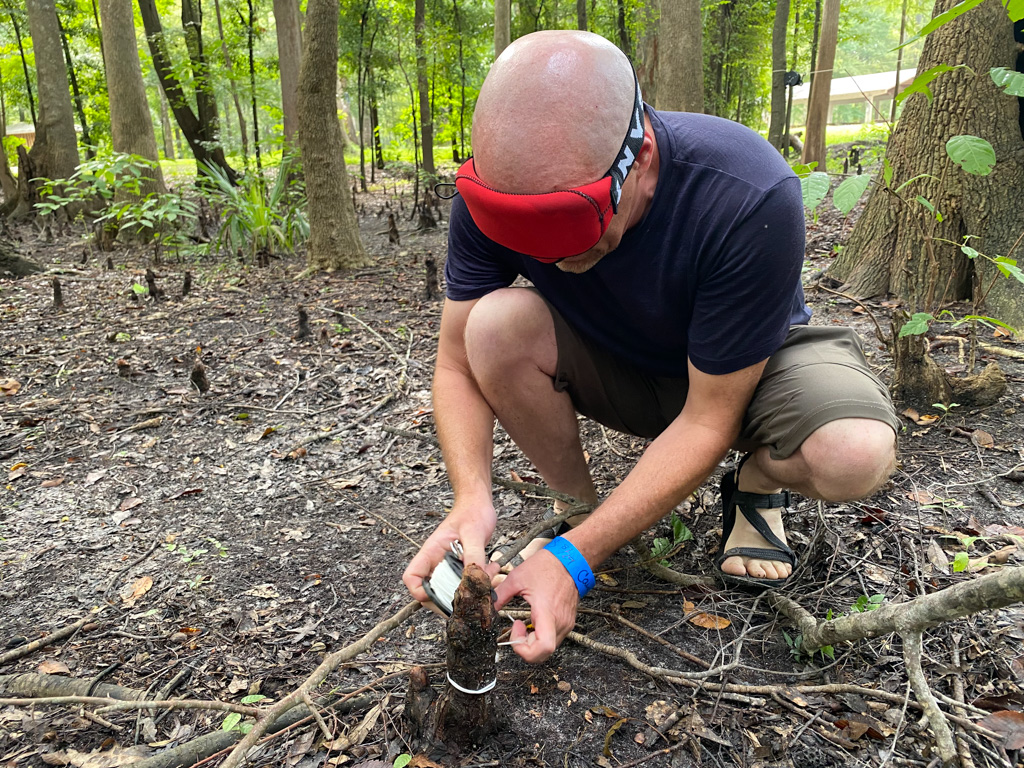
We started the day with a dry drill on how to find a lost line in a zero visibility situation. For some odd reason, I found this drill kind of fun, probably because I found the line and partly because I got to root around in the dirt and trees looking for a good place to tie off my safety spool. I also had amazing luck, clamping my hand down right on the directional arrow when I found the line. I gave myself a good pep talk and we descended into the roaring flow of Ginnie Springs, ready to practice a blind exit. But this time, we were in the catacombs, much smaller and more confined spaces than before. It was almost like the negative thoughts pressed into my mind as the walls pressed closer to my body.
You might be hoping to hear that this was my big turning point, and I succeeded in pushing through and finishing the dive. I didn’t, and I called the dive once again. Amelia and Josh S. needed to complete this skill for their jobs, and I had potentially wasted their air so that they wouldn’t be able to go back and complete the drill. Thankfully, this wasn’t the case, but I felt like it was selfish to keep trying to go on dives, but then calling them halfway through. I realized that if I was to go on another dive, it had to be all or nothing. No more tepid, “I’ll turn around when I’m uncomfortable” mentality.
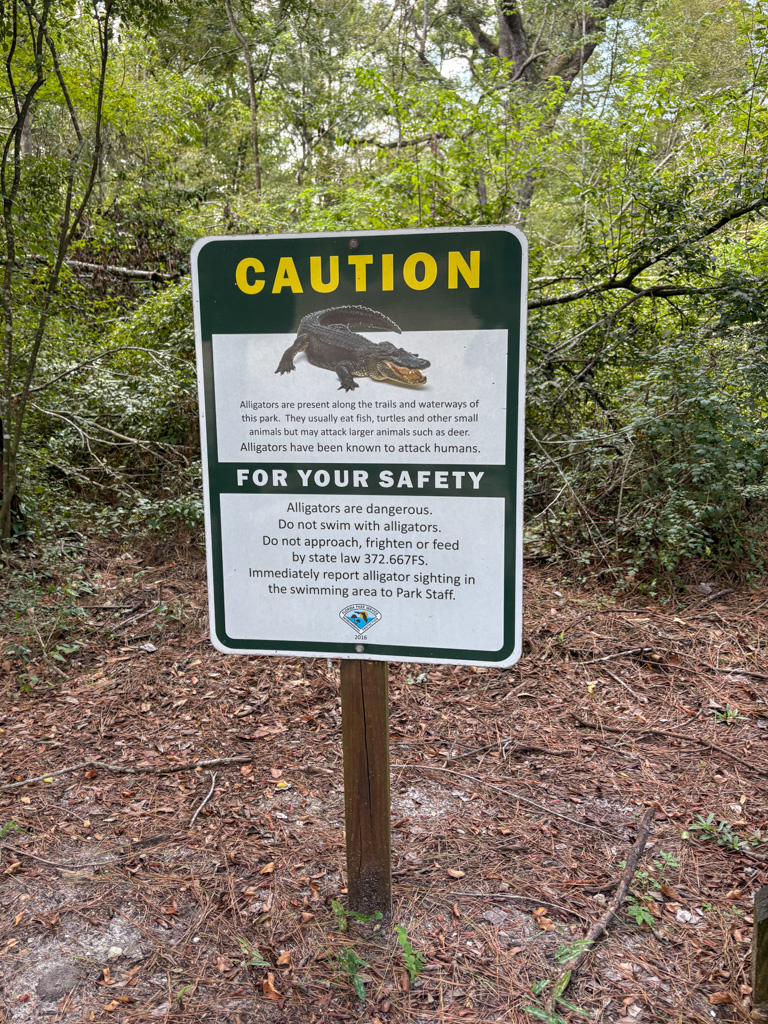
I dejectedly ate my peanut butter sandwich and considered texting Brett to tell him, “thanks for the pep talk, but I failed anyway, and I’m done.” A mixture of being too lazy to walk to the car and not wanting to let him down had me put off the text until later. As the team talked through the plan for the next dive, the stakes were slightly lower in my head (an example of how my mind is biased because they were basically the same). We wouldn’t be in such confined spaces again, and the drill would be at the beginning of the dive. I knew if I had a task to focus on immediately, I would spend much less time psyching myself out. The task at hand was finding a lost line blindfolded, and the fact that this didn’t faze me half as much as just having to swim through a cave with nothing to do should tell you a lot about how my mind functions.
This was my all or nothing moment, and I entered that cave ready to give it everything I had. It’s amazing how this changed my perception of the dive. Even just swimming to the drill room was a better experience because I could focus on prepping myself for the task. I took note of the flow direction, the shape of rocks, and the height of the line as we swam. When Instructor Josh handed me the blindfold, I calmly slipped it on and began the drill after he had disoriented me.
I actually felt more at peace than I had all day as I searched for a place to tie off my safety spool and begin my search in complete darkness. I focused on keeping my breathing steady and methodically sweeping my arm as I headed out in the direction I thought the line was. Because the room wasn’t too big, I figured I could head straight out and then in the opposite direction if I didn’t find it. An expanding circle search would have been time-consuming because of the variety of large boulders within the room. With a combination of good instinct and a lot of luck, I found the line within a few minutes, once again right at the directional arrow, which we all had a good laugh about later.
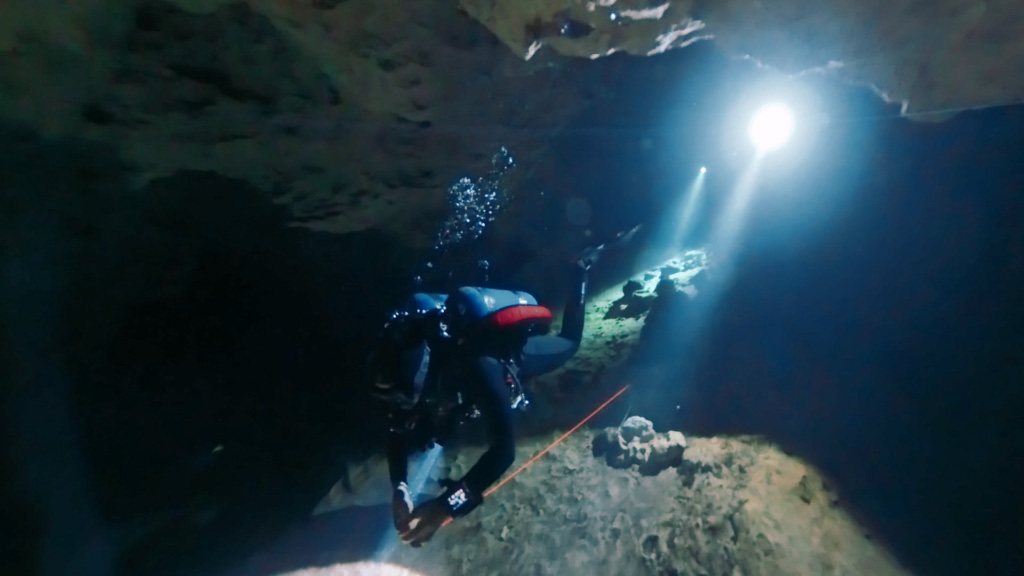
Looking back, I think this was my defining moment. I didn’t lose my cool, followed my instinct, and completed a tough skill. I even had my primary light go out a few minutes after the drill ended, but was able to deploy one of my backups unfazed. I had successfully shut off the unhelpful parts of my mind which had been the biggest challenge of all. It never got any easier for me to convince myself to go into a cave each dive after (I still absolutely did not want to), but I had much better experiences during the dives. I might dare to go as far as to say that I just-possibly-almost-slightly enjoyed my last few. This might be my longest blog, and I don’t even think I came close to describing how difficult this experience was for me, and how hard it was for me to push through. While I hope to never use this certification (although I would change that stance if I was ever fortunate enough to dive Devil’s Hole), I absolutely will use the skills I developed in the course on every dive from now on. As for shutting the unhelpful parts of my mind off… that might still be limited to the caves, but at least I know I’m capable of it.
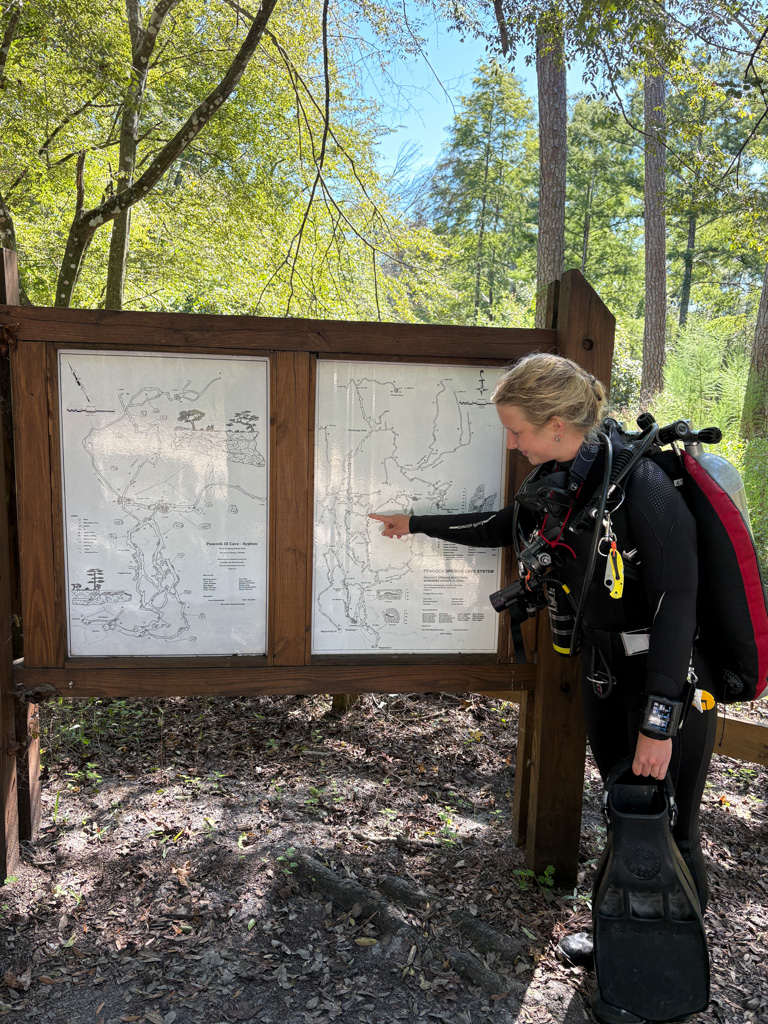
I’ll end this blog by once again reiterating my thanks to the people who helped get me through some pretty tough mental blocks. Josh Thorton was the most considerate, encouraging, and positive instructor, even when I said to his face I hoped to never use his certification. I am a much better diver because he was willing to put up with all my agonizing about how horrible caves are. Josh S. and Amelia are really awesome divers and such great role models to look up to, not just in terms of their skills underwater, but the environment they foster within a team. And Brett and Jim… well, I guess they also helped me out. I realized if they could survive each other in a cave, then surely I had a good chance of making it out alive too.
